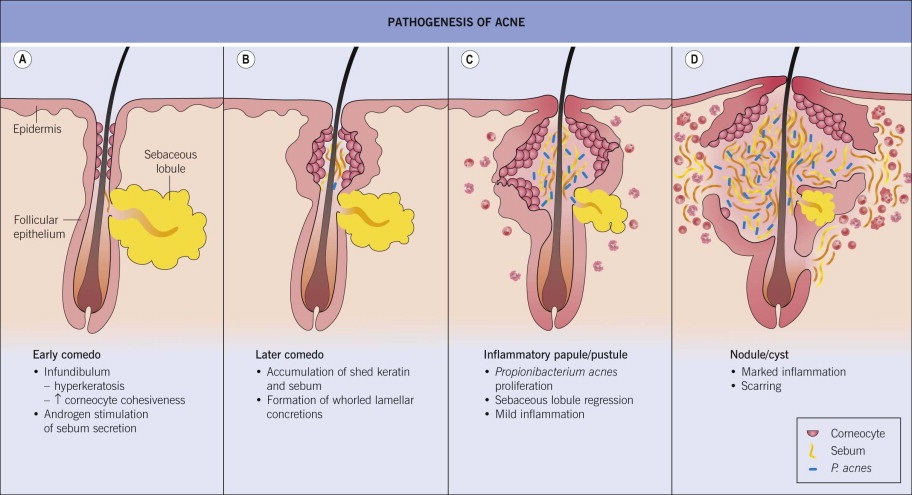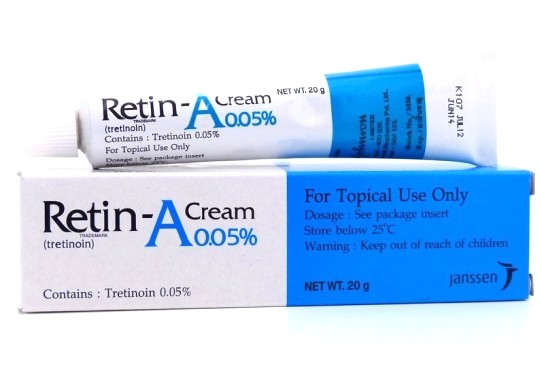
Privacy statement: Your privacy is very important to Us. Our company promises not to disclose your personal information to any external company with out your explicit permission.
What is Acne?
Acne is a chronic, inflammatory skin condition that causes spots and pimples, especially on the face, shoulders, back, neck, chest, and upper arms.
Whiteheads, blackheads, pimples, cysts, and nodules are all types of acne.
Acne is the most common debilitating disease. From adolescent 12-year-olds to middle-aged 50-year-olds, almost 70% have experienced more or less. However, some people are very serious. Some people only happen a little bit. Due to the universal nature of this problem, treating acne has become an important business in the beauty industry.
What Causes Acne?
Human skin has pores that connect to oil glands under the skin. Follicles connect the glands to the pores. Follicles are small sacs that produce and secrete liquid.
The glands produce an oily liquid called sebum. Sebum carries dead skin cells through the follicles to the surface of the skin. A small hair grows through the follicle out of the skin.
Pimples grow when these follicles get blocked, and oil builds up under the skin.
Skin cells, sebum, and hair can clump together into a plug. This plug gets infected with bacteria, and swelling results. A pimple starts to develop when the plug begins to break down.
Propionibacterium acnes (P. acnes) is the name of the bacteria that live on the skin and contributes to the infection of pimples.
Research suggests that the severity and frequency of acne depend on the strain of bacteria. Not all acne bacteria trigger pimples. One strain helps to keep the skin pimple-free.
Hormonal factors: The root cause of acne
A range of factors triggers acne, but the main cause is thought to be a rise in androgen levels.
Androgen is a type of hormone, the levels of which rise when adolescence begins. In women, it gets converted into estrogen.
Rising androgen levels cause the oil glands under the skin to grow. The enlarged gland produces more sebum. Excessive sebum can break down cellular walls in the pores, causing bacteria to grow.
Other possible triggers
Some studies suggest that genetic factors may increase the risk.
Other causes include:
some medications that contain androgen and lithium
greasy cosmetics
hormonal changes
emotional stress
Menstruation
The culprit: Propionibacterium acnes
The sebaceous glands secrete more, the hair follicles are blocked, and a culprit is also required: the emergence of anaerobes such as "Propionibacterium acnes". It is in the cyst of the sebaceous glands, a large number of reproduction, and finally cause the skin's immune response, causing inflammation, whitehead, swelling, and even late cyst nodules, acne and other serious problems.

This bacterial is in sebaceous glands of our face. It belongs to anaerobic bacteria. Only under the above conditions, excessive sebum secretion, and the blocked hair follicle outlet, lead to lack of oxygen and proliferates. Finally, due to the body's immune system, it begins to [quench" and causes the appearance of acne.
In fact, not all people with oily skin have acne. Similarly, not all dry skin people have acne; secretion of sebaceous glands, Propionibacterium acnes and other causes are the incentives, the body's immune response to produce inflammation is the ultimate result.
Acne cannot be cured
For acne, we have to work hard, but make sure you and your clients know this. Acne can not be cured, what we can do is to control, to reduce the reaction, and to delay recurrence, because you can't eradicate male testicles or female ovaries.
For acne patients, we use a variety of treatment, but we cannot remove this underlying endocrine cause. In the treatment of severe female acne, we may use Daching 35 (a complex of highly effective estrogens and progestins, third generation oral contraceptives) to suppress and equilibrate androgens; but for men, this will directly lead to him Femininity and even personality changesm so it must be avoided.
Therefore, we need to use some drugs that inhibit the secretion of sebaceous glands and inhibit the proliferation and division of cells. These drugs include vitamin A preparations.

Whether oral or topical, retinoid preparations can effectively inhibit the secretion of sebaceous glands, control keratinocyte division, reduce the probability of hair follicle clogging, thereby inhibiting the onset of acne. However, everyone must be clear that drugs have "side effects" because you can't just let the drugs work only in the target tissues but other tissues will not interfere. Such drugs will cause dry skin, and if you take it orally, it will have high possibility to cause teratogenesis, so vitamin A drugs should not be taken for a long time, 6 months before pregnancy must be suspended. Generally speaking, it is recommended to be pregnant 2 years after stopping taking retinoid preparations.
Acne Treatment
Killing and inhibition of P. Acnes
Propionibacterium acnes and Demodex are some of the microorganisms that are parasitic on the human body (skin). In fact, there are about 2-3 kilograms (kg) of various parasites and organisms in the normal human body.
How to effectively suppress them?
1. Blue light in short wavelength LED treatment
LED short-wavelength blue light irradiation treatment of acne is mainly the use of photochemical effects and selective photothermal effects. It's a Professional Aesthetic Equipment. Because the endogenous photosensitizer porphyrin can be produced in the metabolism of Propionibacterium acnes, its main components are protoporphyrin IX and coproporphyrin III. The absorption peak of light of these endogenous photosensitizers is at 420 nm. When blue light with a wavelength of about 450 nm is irradiated on the acne lesions, the photosensitizer absorbs light energy and generates singlet oxygen and oxygen free radicals and other active molecules through a series of complicated photochemical reactions. Oxygen free radicals have a toxic effect on acne bacteria cells, can make coagulation and necrosis of acne bacteria, and thus play the role of acne treatment.
Once a week and using a prosthetic product and skin care product, raw collagen or Bonnach III collagen spray, mask.
2. IPL treatment
IPL has a very good effect on the treatment of acne skin. Because this is a Professional aesthetic equipment. Also based on the principle of selective photothermolysis, a short-wavelength handle is selected and sufficient energy and an appropriate pulse width are used to irradiate the acne skin. The thermal effect of light heats the inflammatory blood vessels to make them contraction, then blood vessels closed, inflammation subsided; at the same time high enough energy go into the skin to increase skin temperature, aphids and P. acnes will be apoptotic and achieve acne treatment. At the same time, IPL light (380, 530, or 560nm treatment heads) has the effect of shrinking the pores to control oil, and it is also one of the factors that suppress acne.
Two treatments are performed every month. Collagen mask dressing after treatment can inhibit P. acnes simultaneously.
3. Infrared laser (1927nm) Treatment
The thulium laser has a very unique thermal penetration effect, its "thermal flipping effect" causes the dermis heat, the epidermis is not damaged, the high dose of PML thulium laser heat can effectively kill P. acnes, locusts, etc., and can be effective for the inhibition of sebaceous glands, the closure of blood vessels, has a very small effect on open and closed acne, while also shrink the pores and lift the skin.
4. Supramolecular salicylic acid treatment
Salicylic acid has anti-inflammatory capacity (corresponding to 82% of hydrocortisone) and its bi-directional keratinous conditioning action allows inflammatory acne to be quickly eliminated. And in the field of medical skin care, salicylic acid can also treat folliculitis, seborrheic dermatitis, rose acne, rosacea and so on.
5. Comprehensive use of collagen and repair factors
The basic structure of the triple helix of collagen and the high-level structure that is cross-linked into a network can not only lock the moisture in the skin's water layer, but also provide support for various skin cells. Acne skin damage and skin atrophy and other symptoms are accompanied by a large amount of collagen loss, at this time, we should be coated with a large number of type I and III collagen to prevent the formation of scar acne pit.
At the same time, we have to work hard on the repair of the epidermis. The regeneration rate of the epidermis and the reconstruction of the skin barrier function also play a key role on it. Therefore, it must be used with the repair factor, which contains EGF, sodium hyaluronate, and ceramide, allantoin and other active ingredients to help repair the epidermis. Only active product repair can help the recovery of acne skin.
LET'S GET IN TOUCH

Privacy statement: Your privacy is very important to Us. Our company promises not to disclose your personal information to any external company with out your explicit permission.

Fill in more information so that we can get in touch with you faster
Privacy statement: Your privacy is very important to Us. Our company promises not to disclose your personal information to any external company with out your explicit permission.